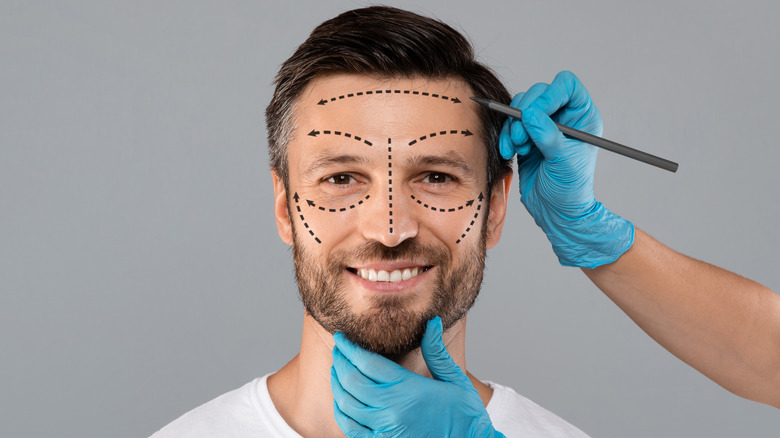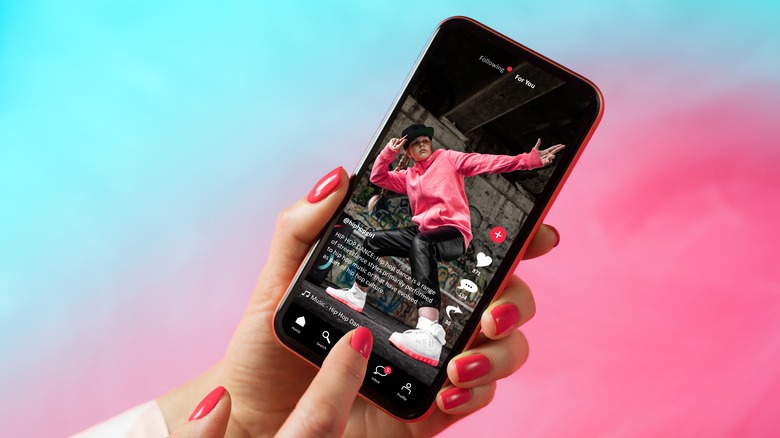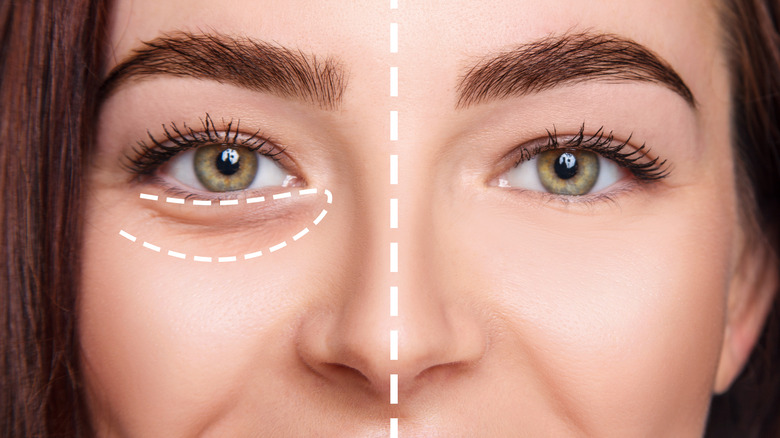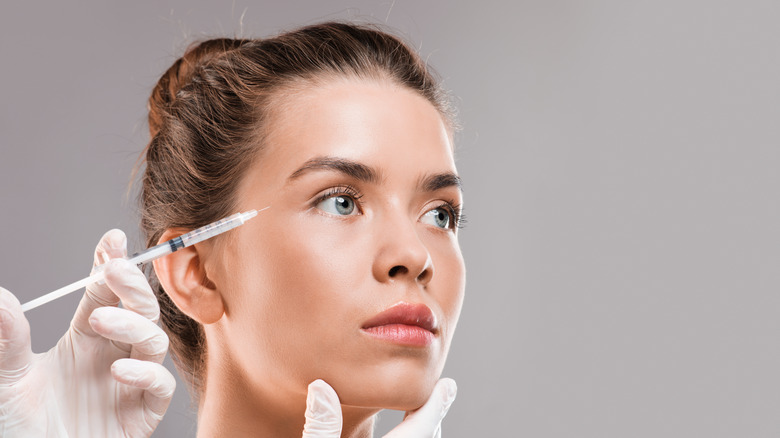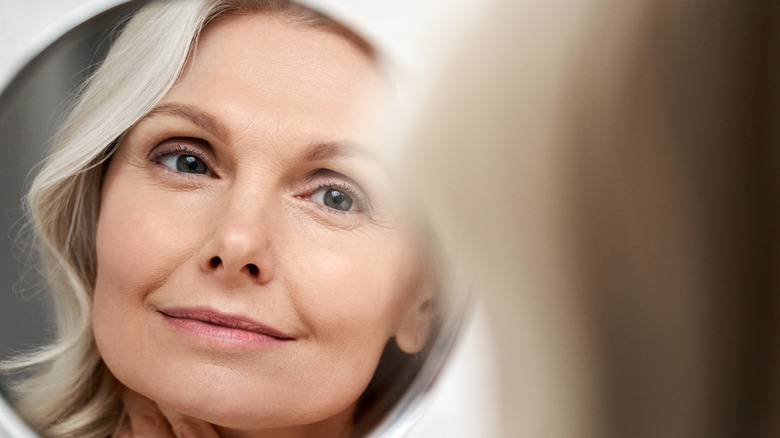Plastic Surgeon Dr. George Bitar On DIY Plastic Surgery Tricks And TikTok Beauty Trends - Exclusive Interview
If you're on TikTok, you've probably seen some beauty trend "life hacks" being showcased — face taping, lip injection pens, liquid chlorophyll, nasal tanning spray –- you name it. The problem is, not all of these procedures are safe, and they can have some pretty scary side effects. We sat down with plastic surgeon, Dr. George Bitar, to discuss the details of the worst TikTok beauty trends and why you should steer clear of them.
Dr. Bitar is a board-certified plastic surgeon who has carried out over 10,000 cosmetic facial and body procedures. He is the founder and medical director of the Bitar Cosmetic Surgery Institute, offering skin care, injectables and cosmetic surgery. An expert in his field, Dr. Bitar has trained new doctors and has lectured about his procedures at national and international medical conventions. He has contributed to several peer-reviewed medical journals and book chapters, and co-authored a book for other plastic surgeons.
In an exclusive interview with Health Digest, Dr. Bitar also shares with us some at-home DIY plastic surgery tricks, the current top trends in plastic surgery, and dispels some of the most common myths about plastic surgery.
TikTok beauty trends to avoid
What are the worst TikTok beauty trends right now? Are there certain dangers to them we should know about?
Liquid Chlorophyll, at-home hyaluron pens, nasal tanning spray, sea salt acne spray, and face taping. A rule of thumb is: If you think you need to run it by a doctor before you do it, then you probably should!
[What is] Liquid Chlorophyll?
It's a liquid tonic that users make at home that purports to be an acne cure-all and improves skin's texture and redness.
Why [should you] steer clear?
Drinking chlorophyll-infused water to get rid of acne or improve your skin can worsen your skin condition.
[What are] at-home hyaluron pens?
The hyaluron pen (also known as a hyaluronic acid pen) is a small, handheld medical device used to administer hyaluronic acid fillers into the face. This "pen" was originally created for diabetic patients to offer a needle-free, pain-free way to deliver insulin into the subcutaneous tissue. The pens took TikTok users by storm for their supposed potential to inject the lips, jaw line, or nose with hyaluronic acid at home.
Why [should you] steer clear?
You should never be giving yourself lip procedures or any aesthetic rejuvenation at home. At the advisory of the Food and Drug Administration (FDA), "no one should be purchasing a hyaluron pen due to the fact that they can cause bleeding or bruising, infection with bacteria, fungus, or virus from the filler or needle-free device, among several other side effects, including death."
Don't ever try this at home. Injectables may cause occlusion of blood vessels, leading to skin death and possibly blindness in the most experienced hands, so when someone who is not familiar with facial anatomy injects themselves, they could cause a catastrophe! To put it bluntly — you would be crazy to inject yourself at home.
[What is] at-home nasal tanning spray?
These products, showcased on TikTok, aren't strictly self-tanners. Instead, they're inhaled as nasal sprays to boost the effects of sun exposure or a tanning bed.
Why [should you] steer clear?
You shouldn't be inhaling substances that haven't been studied sufficiently, as using medications nasally can affect your sense of smell. They can also potentially have toxic effects on the cilia of the nose, keeping the nose from moving mucus through it normally. This can lead to mucus buildup throughout the nasal cavity, which thickens and forces you to blow out or postnasal drip.
Melanotan is an unregulated synthetic chemical that functions as a hormone and supports melanogenesis, which is the process by which melanin, a black-brown pigment, is produced in the skin. Nasal tanning sprays have a range of different ingredients, but most commonly, they will all contain tyrosine or melanotan as their main active ingredient.
Furthermore, this is a loosely regulated industry, and you may subject yourself to toxins that have long-term effects that we don't even know about.
Always ask an expert
[What is] "face taping"?
Face taping is when one uses a piece of tape of any kind to "freeze" their face while they sleep. The idea is that the tape will keep the muscles in place throughout the night, limiting their motion, and therefore minimizing wrinkles. During our sleep, it's possible we can still make facial expressions and move around as we adjust. Using tape is supposed to "keep it in place," preventing wrinkle formation.
Why [should you] steer clear?
Aside from being unrealistic to use a piece of tape to keep your face in place throughout the night, it can do more harm than good. Using a piece of tape, especially one that is "supposed" to hold your skin down for a whole night, can damage the skin barrier when you take it off.
This tape isn't made to be safe on the skin and can cause redness, irritation, and acne breakouts. The adhesive must be incredibly tight, and therefore, uncomfortable to use for an extended time to "hold" the muscles still. There is no scientific evidence whatsoever that this is remotely effective.
Do you know of any helpful TikTok beauty trends we should be on the lookout for?
Consumers need to be very cautious when trying at-home beauty trends as seen on TikTok. Most of the content creators on this platform who are creating these beauty trends that go viral are not trained professionals, such as dermatologists, plastic surgeons, or licensed aestheticians.
If you like keeping abreast of the latest beauty trends via this app, be sure to follow a board-certified plastic surgeon, dermatologist, or licensed aesthetician for advice. If you see a viral beauty trend and it is not from a professional, consult with your aesthetic physician before trying it. Many of them, from non-professionals, can do more harm than good.
Do you have any non-surgical tips or tricks for reducing under-eye dark circles?
For those who are not ready for blepharoplasty, where fat is surgically excised from the upper and/or lower lids, dermal fillers can be used to help remove the lines and creases under the eyes. These are not permanent and will need to be repeated every few months, depending on the severity of the dark circles.
Suppose the dark circles are also causing puffiness under the eyes. In that case, this can be corrected with treatments such as Ultherapy, which provides skin tightening through ultrasound waves for patients who don't want to undergo surgery. One of the many benefits of Ultherapy is that you can achieve rejuvenated and taut skin without bruising, bleeding or pain.
The problem with influencers
What is an "Instagram face"?
Like fashion, facial aesthetic ideals go through trends. In the 1970s, Farrah Fawcett was the "prototype", with thin lips, a nose that was not Barbie Doll perfect, and a thin face with high cheekbones. Today's look is virtually the polar opposite.
It has been said that Kim Kardashian created the look of today's "Instagram face." It is typically characterized by a youthful, heart-shaped face; a small button nose with an upturned tip; full lips; upturned, cat-like eyes; a defined chin; chiseled, high cheekbones; and the length of the nose "divides" the rest of the face into three parts.
Should people want one?
In my practice, I don't believe in giving my patients a "cookie cutter" look. Full lips that look great on an influencer might not fit the face of the patient in front of me. A "cute" pert nose may not look balanced on everyone's face.
Although patients bring in photos and say, "Can you give me this?" I have to assess the proportions of the patient I am treating so they have an aesthetic outcome that's proportional and natural. I don't think people should strive to all look the same. Facial beauty and symmetry can take many forms.
The Model Lift™ was created after years of injecting people's faces, as well as doing surgical facelifts, and has become our signature procedure at the Bitar Cosmetic Surgery Institute in the metropolitan Washington DC areas. I created it as a philosophical concept to answer the question: "What are the nonsurgical treatments that I can do to give a certain patient the most beautiful facial features without surgery?"
After many years and hundreds of Model Lifts that I have performed to balance the cheeks, nose, lips and jaw line, I feel that we are able to give our patients a youthful and beautiful look without the face looking artificial or overly-injected.
Plastic surgery trends
What are the current top trends in plastic surgery?
More men are having plastic surgery, as the stigma has been lifted for them. Gynecomastia (male breast reduction) is very popular in my practice and nationwide.
In terms of facial procedures, facelifts, eyelid surgery, and rhinoplasties are trending. People are coming back to redo noses that were done [10 to 30] years ago, with which they are not pleased. Because of new techniques, secondary rhinoplasties are more successful than they have ever been.
Although non-surgical procedures like Botox and fillers are still in demand, many patients want longer lasting and more impactful change that can only be produced through surgery. Many people understandably put on weight during the pandemic and had exercise regimens curtailed. There is a large demand for body contouring procedures like liposuction, since people are no longer at home in baggy sweat pants and are wearing more fitted clothing.
Also popular are very customized, smaller facial surgical procedures performed simultaneously, so that the patient only must undergo anesthesia once and a complete rejuvenation is possible, but not as evident as a "major overhaul" — these include chin implants, lip lifts, browpexies and fat grafting to the face, all very popular procedures at the Bitar Cosmetic Surgery Institute.
Talk to us about micro-dosing Botox. What does this mean, and is it safe?
Yes, it is safe. It is also referred to as "baby Botox."
Micro-dosing is injecting only small amounts of Botox at once. It simply means using less of the injectable to treat each area while still adding facial volume and eradicating wrinkles. The purpose of it is to eliminate the "frozen" look that many patients wish to avoid from traditional Botox.
It is a mini dosage of Botox, and some patients find that it leaves their face more flexible, with natural movement. Botox is still injected at the same strength; there is simply less used per area. The secret to doing it correctly is to disperse each dose more widely with several injection points of contact. There is also more acceptance of this technique because patients can tell their friends, "I didn't have Botox – I just had micro-Botox," with the implication that I am not old enough to need real Botox.
What role does ultrasound technology play in plastic surgery?
Ultrasound is being employed in many devices that have different purposes both for the face and body. The way ultrasound technology works is via high-frequency ultrasonic vibrations. If ultrasound is being used to treat the face (depending on its intended purpose), this allows it to penetrate deep into pores, improving skin tone, tautness, and texture. A typical treatment session for the face will take approximately 30-45 minutes and it is completely non-invasive with no downtime.
For the body, ultrasound can be used for fat reduction in targeted areas for patients who are at or close to their ideal weight and find they have areas of the body resistant to diet and exercise, such as the flanks, upper arms, lower abdomen, inner thighs, etc. It breaks down fat over time by exerting pressure on fat cells through ultrasonic vibrations. When the fat is broken down, it is absorbed into your body by the lymphatic system.
In my institute, ultrasound used for skin tightening, as in ultherapy, has been very successfully used over the last ten years to give a youthful and a more rejuvenated face to people who want a noticeable difference, but do not want surgery.
Plastic surgery myths
Can you tell us a bit about facial fillers? Where and how are they used? Is there an advantage to using fillers rather than pursuing surgical options?
Typically comprised of hyaluronic acid, fillers are compounds. Hyaluronic acid is something that occurs organically in our body. As we age, most people will lose facial fat, skin elasticity, and muscle tone. Fillers literally fill in the hollows and flattened areas, it can add volume to lips, and even subtly change facial shape, such as creating more prominent cheekbones or enhancing the look of the jaw area.
Not to be confused with Botox, that eliminates wrinkles from age and muscle contractions, filler can provide a "liquid face lift" if a patient has multiple areas filled, or it can be used to augment one area, such as the lips, to create a fuller pout.
The advantage of filler over surgical procedures is that filler is non-invasive with no downtime. The results typically last for several months instead of a facelift that can last for years. Fillers are a good way for patients to experiment with enhancing different areas of the face without committing to a permanent change. They are also ideal for younger patients where facelift surgery, neck lift, or blepharoplasty might be too premature.
Our Model Lift™ is a combination of fillers, neurotoxins and other nonsurgical modalities to create perfect facial harmony and a youthful appearance. It is the perfect example of how fillers can, in the experienced hands of a plastic surgeon, dermatologist or nurse/PA injector, be used with other nonsurgical modalities to create a very versatile set of solutions to various facial anatomical deficiencies in lieu of surgery.
Are there any myths about certain procedures, or about plastic surgery in general, that you'd like to dispel?
Myth 1: Silicone breast implants are dangerous. This is false. They are equally as safe as saline. Many women prefer them because the implant is pre-filled with silicone gel, and it more closely replicates the look and feel of human fat. There have been thousands of studies that attest to their safety.
For those who say that implants are not completely safe, I agree. It is a device and like all devices, is subject to risks and benefits – which is why discussing those risks with a board certified plastic surgeon before deciding on having this surgery is very important.
Myth 2: Fat deposits after a liposuction procedures will eventually return. This is false. Once fat is suctioned out of a specific area, the fat cells will not grow back. In that sense, liposuction is permanent. If someone puts on weight by increasing caloric intake, there will still be remaining fat cells that expand. Once you have a liposuction procedure, it is important to maintain stable body weight.
Myth 3: Scaring from a facelift will be evident. This is false. When performed by a skilled board-certified plastic surgeon, they are trained to conceal scars in contours or folds of the skin that are not noticeable. In my facelifts, I hide the scars inside and around the ears in the hairline to allow my facelift patients afterward to wear their hair in a ponytail, if they like.
Find out more about Dr. George Bitar and his services on the Bitar Cosmetic Surgery Institute website.

